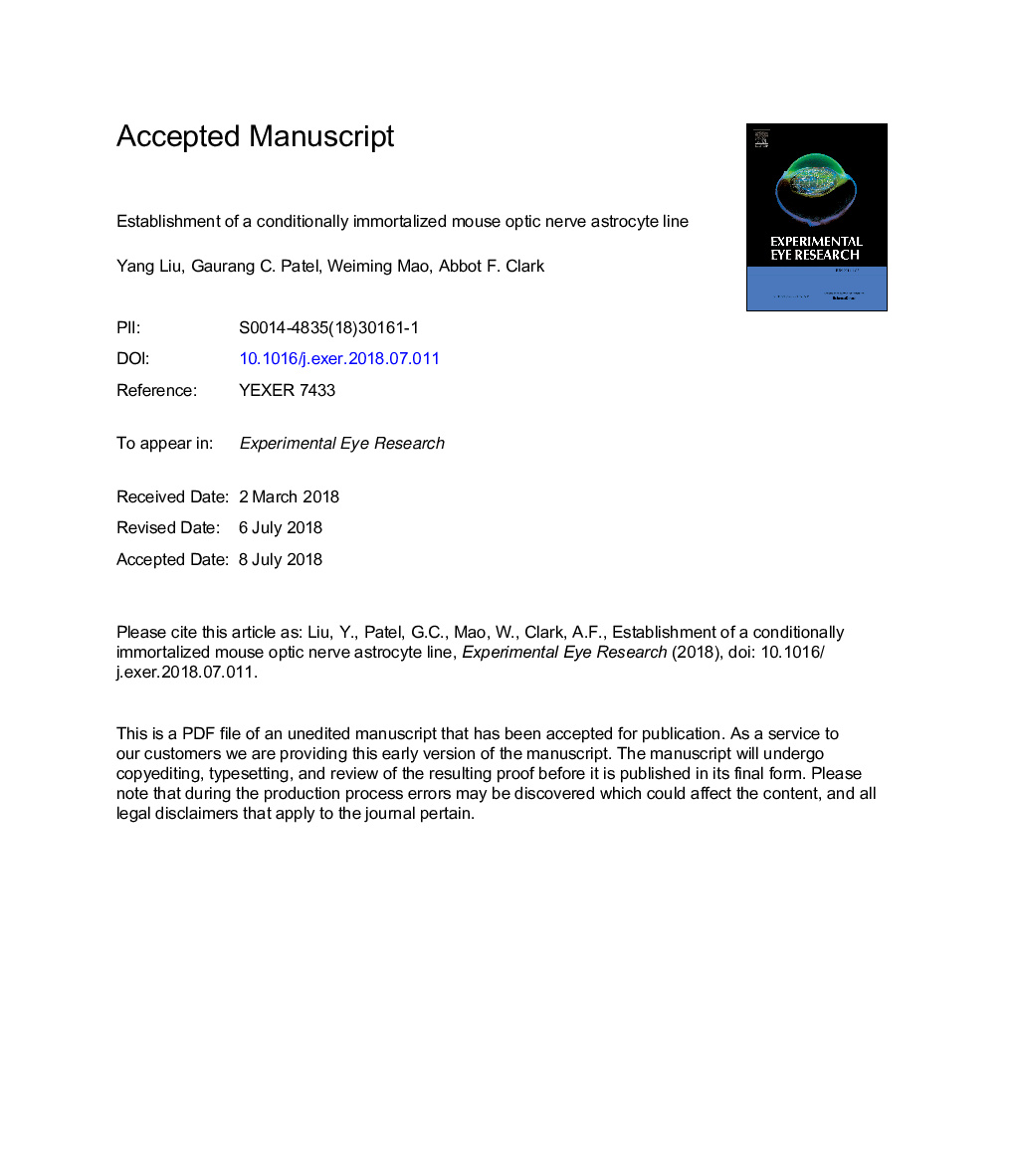| کد مقاله | کد نشریه | سال انتشار | مقاله انگلیسی | نسخه تمام متن |
|---|---|---|---|---|
| 8791887 | 1602546 | 2018 | 21 صفحه PDF | دانلود رایگان |
عنوان انگلیسی مقاله ISI
Establishment of a conditionally immortalized mouse optic nerve astrocyte line
ترجمه فارسی عنوان
ایجاد یک خط آستروسیت عصب موش صحرایی معتبر موقت
دانلود مقاله + سفارش ترجمه
دانلود مقاله ISI انگلیسی
رایگان برای ایرانیان
کلمات کلیدی
آستروسیت عصب اپتیک، خط تلفن، جاودانه بودن قانونی،
موضوعات مرتبط
علوم زیستی و بیوفناوری
ایمنی شناسی و میکروب شناسی
ایمونولوژی و میکروب شناسی (عمومی)
چکیده انگلیسی
Optic nerve astrocytes play a major role in axonal degeneration and regeneration. Astrocyte lines are an important tool to elucidate the responsible cellular mechanisms. In this study, we established a conditionally immortalized mouse optic nerve astrocyte line. Astrocytes were cultured from explants derived from postnatal day 4-5â¯H-2kb-tsA58 transgenic mouse optic nerves. Cells were cultured in defined astrocyte culture medium under permissive (33â¯Â°C) or non-permissive (38.5â¯Â°C) temperatures with or without interferon-ɤ (IFN-ɤ). Astrocytes were characterized by immunocytochemistry staining using antibodies against glial fibrillary acidic protein (GFAP) and neural cell adhesion molecule (NCAM). Cell proliferation rates were determined by cell growth curves and percentage of Ki67 positive cells. Karyotyping was performed to validate the mouse origin of established cell line. Conditional immortalization was assessed by western blot-determined expression levels of SV40 large T antigen (TAg), p53, GFAP and NCAM in non-permissive culture conditions. In addition, phagocytic activity of immortalized cells was determined by flow cytometry-based pHrodo fluorescence analysis. After 5 days in culture, cells migrated out from optic nerve explants. Immunocytochemistry staining showed that migrating cells expressed astrocyte makers, GFAP and NCAM. In permissive conditions, astrocytes had increased expression levels of TAg and p53, exhibited a greater cell proliferation rate as well as a higher percentage of Ki67 positive cells (nâ¯=â¯3, pâ¯<â¯0.05) compared to cells cultured in non-permissive conditions. One cell line (ImB1ON) was further maintained through 60 generations. Karyotyping showed that ImB1ON was of mouse origin. Flow cytometry-based pHrodo fluorescence analysis demonstrated phagocytic activity of ImB1ON cells. Quantitative PCR showed mRNA expression of trophic factors. Non-permissive culture conditions decreased expression of TAg and p53 in ImB1ON, and increased the expression of NCAM. A conditionally immortalized mouse optic nerve astrocyte line was established. This cell line provides an important tool to study astrocyte biological processes.
ناشر
Database: Elsevier - ScienceDirect (ساینس دایرکت)
Journal: Experimental Eye Research - Volume 176, November 2018, Pages 188-195
Journal: Experimental Eye Research - Volume 176, November 2018, Pages 188-195
نویسندگان
Yang Liu, Gaurang C. Patel, Weiming Mao, Abbot F. Clark,
